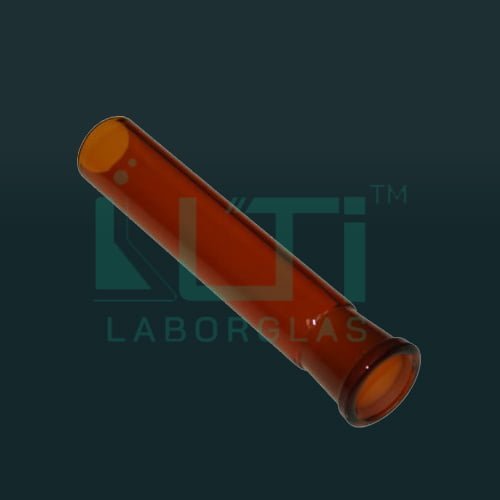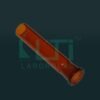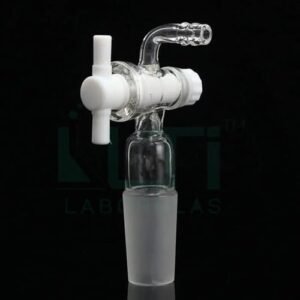As per ASTM standards E – 676
| Part No. | Female Joint | Approx. O.D. of Tube (mm) | Total Length (mm) | Pack QTY. |
| 1140-12F | 12/30 | 16 | 120±10 | 10 |
| 1140-14F | 14/20 | 18 | 120±10 | 10 |
| 1140-19F | 19/22 | 22 | 120±10 | 10 |
| 1140-24F | 24/25 | 28 | 125±10 | 10 |
| 1140-29F | 29/26 | 32 | 135±15 | 10 |
| 1140-34F | 34/28 | 38 | 135±15 | 10 |
| 1140-40F | 40/35 | 50 | 150±15 | 10 |
- Light-Sensitive Experiments: Amber glass is often used in laboratory settings for experiments involving light-sensitive substances. The medium-length interchangeable joints can be used to connect various glass components, providing a secure and interchangeable connection for setups requiring protection from certain wavelengths of light.
- Photosensitive Compounds: Laboratories working with photosensitive compounds or solutions may prefer amber glassware to minimize the effects of light exposure. The medium length of the joints can provide flexibility in setting up different glassware configurations.
- Sample Storage: Medium-length amber glass joints may be employed in the construction of glassware systems for the storage of light-sensitive samples. The interchangeability of the joints allows for flexibility in designing storage setups.
- Chemical Compatibility: It’s essential to consider the chemical compatibility of the amber glass with the substances used in the laboratory. Amber glass is often chosen for its resistance to certain chemicals, and it’s important to ensure that it is suitable for the specific applications.
- Distinctive Identification: The amber color can serve as a visual identifier for specific equipment or experiments. This can be particularly useful in a laboratory with multiple setups or when working in a shared space.
- Specialized Experiments: In cases where researchers are conducting specialized experiments that involve specific environmental conditions, such as light sensitivity, the use of amber glass may be part of the experimental design.
- Educational Demonstrations: In educational laboratories, the use of amber glassware, including medium-length interchangeable joints, can be incorporated into demonstrations to teach students about light-sensitive reactions or the importance of material selection in experimental design.







